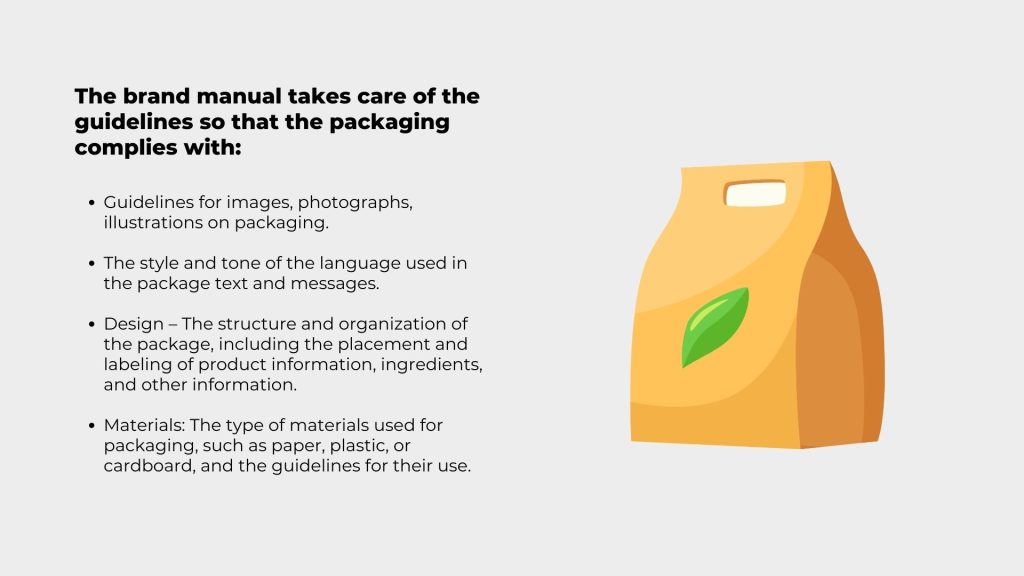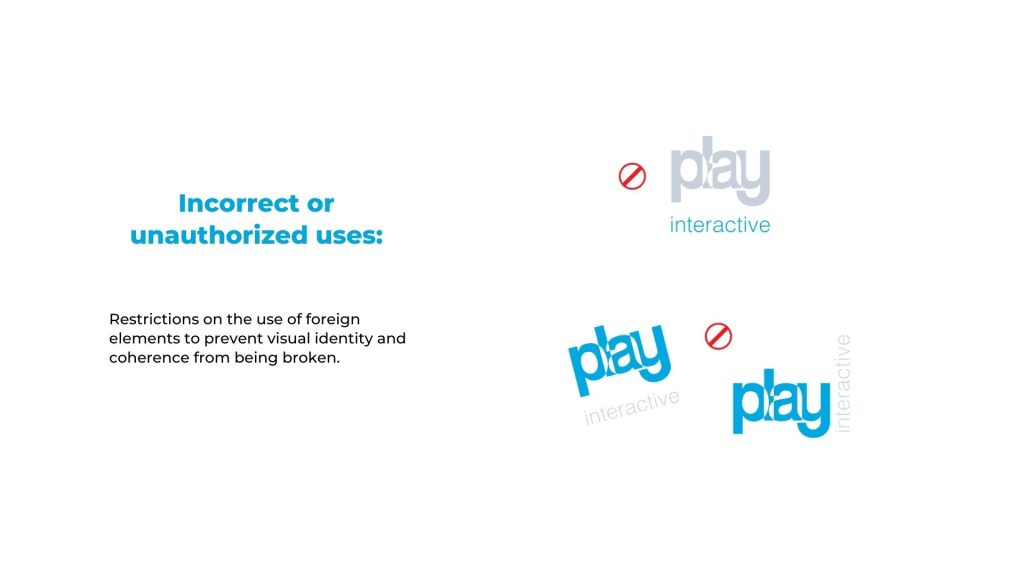How you should use your brand in different channels
To show your company’s identity to your customers, you must know how to adapt your brand in different channels. All the spaces in which you interact with them require special attention. This is accomplished with a document called a brand manual that describes the visual and messaging elements that represent a company’s brand.
Typically, the manual includes information about the company logo, color palette, typography, images, tone of voice, and guidelines for using the brand consistently across all marketing materials.
This document serves as a reference for employees, partners and external collaborators, and ensures that the brand is represented consistently and accurately to maintain the integrity and coherence of a company.
1: Packaging
The manual ensures that all brand materials are consistent and align with the values and messages it intends to communicate; It must describe the visual and verbal elements that make up the brand identity as represented on the product’s packaging.
Currently, packaging is no longer just about protecting or wrapping a product, but has become a communication channel for the values and messages of the brand.
The packaging is, after all, the most direct way in which the product comes into contact with the customer and can be an important factor of loyalty.

It is important that when designing your packaging you keep in mind your buyer persona, the customer they had in mind when they thought your product would be useful. The design will not be effective if it does not take into account the segment that wants to attract attention and the need that it needs to cover.
Establishing guidelines for your packaging brand helps ensure consistency in visual and verbal brand elements across all product packaging, and helps create a cohesive and recognizable brand image for consumers.
It is important that when designing your packaging you keep in mind your buyer persona, the customer they had in mind when they thought your product would be useful. The design will not be effective if it does not take into account the segment that wants to attract attention and the need that it needs to cover.
Establishing guidelines for your packaging brand helps ensure consistency in visual and verbal brand elements across all product packaging, and helps create a cohesive and recognizable brand image for consumers.
2: Websites
The application of a brand manual in different channels includes, of course, web pages. In this case, you must describe the visual and verbal elements that make up the brand identity as represented on the web.
This can include guidelines for things like:
- Use of the logo: the correct format, size and placement of the logo on the website.
- Color palette: The official colors of the brand and its combination of all the colors and shades that are used in it, whether it is the color of the background image, the navigation menu, the written content or even the icons and buttons more little ones.
- Typography: The typefaces used in headers, body text, and other elements of the website.
- Images: Guidelines for the use of photographs, illustrations and other visual elements on the website.
- Tone of Voice: The style and tone of the language used in the copy and the messages you will communicate through the page.
3: On social media
Your use of your brand for social media should describe the visual and verbal elements that make up your identity as represented on social media platforms.
This implies that there is coherence in all the profiles of each social network that we choose as a communication channel and in each of the publications that we make on them to get our messages across.
Here, in addition to the visuals of logo, typography, colors, etc., we’ll emphasize tone of voice: the style and tone of the language used in social media posts, comments, and messages.
As they are means of direct interaction with customers (potential or current, happy or dissatisfied) it becomes essential to establish guidelines for responding to comments and messages, as well as interacting with followers and other users of social networks.
Social media campaigns also require a well-established and studied strategy that tells us the type of content to be published on the selected social networks, including the frequency of posts, the types of topics covered, and the tone of voice used.
By establishing these guidelines, a social media brand manual helps ensure consistency in visual and verbal brand elements across all social media channels and helps create a cohesive and recognizable brand image to followers and others. users.
4: Advertising campaigns
When you decide to undertake an advertising campaign, both in traditional and social media, you take risks for what you invest. It is not only about money but also about the prestige that the brand has managed to accumulate during the time it has been on the market.
Therefore, when using your brand in different channels, you must ensure that when designing an advertising campaign, our values and the corporate identity that we have built for our brands are taken into account.
The brand manual will provide information and instructions on how to create and execute advertising campaigns. It outlines the goals, target audience, key messages, budget, and other critical components of an advertising plan.
The design department and marketing agencies will have the tools to guide themselves in the generation of content and audiovisual materials. The updated brand manual helps ensure that all advertising activities align with the company’s overall brand strategy and guidelines.
5: How you should not use your brand in different channels
The brand manual includes guidelines for the appropriate use of the visual elements and values associated with your product or service. However, it is also relevant to specify unauthorized cases, what “SHOULD NOT BE DONE”, that is, to anticipate the probable incorrect uses of the brand.

It becomes a necessity to add a section with incorrect uses that will be useful to the design team and avoid setbacks and rework. It can warn of problems such as avoiding shadows, inclinations, choosing the wrong colors.
In the same way as with the visual elements, standards can be set that attend to the tone of voice: do not unbalance the publications or campaigns towards excessive formality or, at the other extreme, become the subject of involuntary ridicule. Clarify the exact register of your sense of humor, the technical level of the messages, the exact values you want to represent.
In the editorial line of the brand there are also incorrect uses and verbal communication is very delicate. For example, an inappropriate message on social networks, an error in the packaging, or an ambiguous copy can cause great damage by going viral, in these cases, a guide that regulates the content associated with the brand is very useful.


